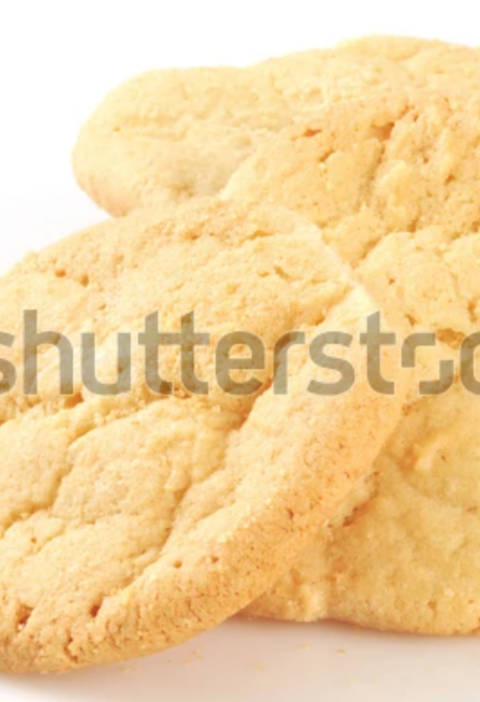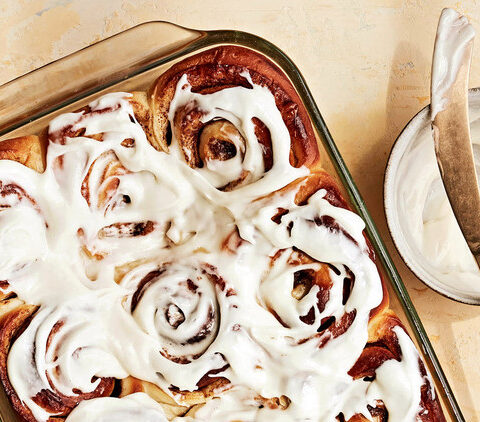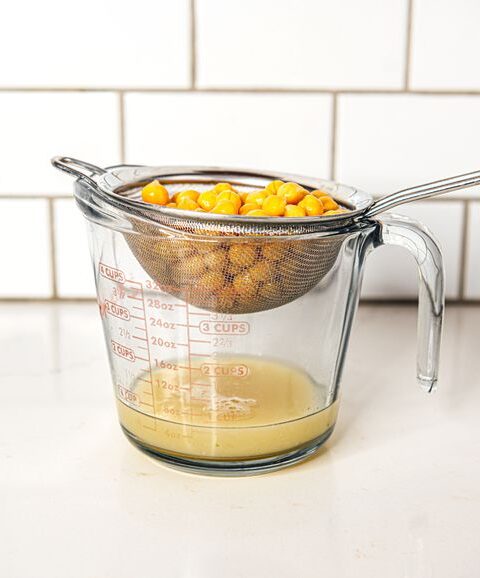Flan is a delicious dessert that everyone should be able to enjoy! Unfortunately some can’t because of health concerns or because of personal lifestyles. So we have come up with some alternatives to the eggs in the original egg recipes. Click here to explore this substitution of our original recipe to this healthier version of flan!
Milk
Milk is the main liquid in this recipe. This is because milk is 87-88% water and 3-4%, which gives the custard the liquid it needs to dilute the proteins in the custard so that they do not coagulate. With the addition of heat, it slows down the process. Therefore, when the proteins eventually end up coagulating, the result is a much more tender structure.
Heavy Cream
To those who are lactose intolerant, watch out! There’s a good amount of milk used in this recipe but not to fret, it has its reasons. Heavy cream has a 30% fat content which helps thicken the consistency of the flan and adds to the creaminess of it as well. Since there is a small ratio of proteins in the cream, the protein molecules stick to the fat globules instead of each other so when the cream is being heated, it doesn’t curdle.
Sugar
The groups in carbohydrates are a family of biomolecules (numerous substances that are produced by cells and living organisms) known as sugar, saccharides, polysaccharides, complex carbohydrates, simple sugars, starches, pectins, fiber, and gums. Yes, I know! It really seems like a lot, but don’t worry! For now, we will only focus on one of our ingredients in our recipe, sugar!
Since we are only using table sugar as one of our ingredients, we will focus on glucose (dextrose),

fructose (levulose), and … finally… ,the moment we have been waiting for, sucrose (table sugar).

Glucose is a monosaccharide, a basic compound that serves as the building blocks of carbohydrates.
Caramelization
The main flavor in the flan is the sugar component.
In this recipe, the way we use the sugar as the main flavor is caramelizing it. The method used to caramelize the sugar is using the wet method. Caramel is primarily made for the flavor and the color it gives in any recipe. If you asked, how come sugar becomes this way when it is heated? Well, I am so glad you asked. Due to the sugar being oxidized when it is heated at its caramelization point, the covalent bonds begin to break down. The oxidation causes the loss of water molecules which makes the sugar melt into a thick brown syrup.
Just heating sugar causes caramelization. Seems easy, right? No, you have to be careful, because if you heat the sugar for too long on the heat source, or when the temperature is too high, you run the risk of burning the sugar.
To have a safety net while making the flan, we will be using the wet method on making caramel.
The wet method is adding water with the sugar when it is being melted. This increases the amount of water available on the heating source, so it allows the sugar not being able to burn, especially with a small quantity of sugar. When it is a small amount of sugar being caramelized without water, it does not allow room for error. Any amount of extra time on such a small amount could lead to something we do not want, burnt caramel.
Vanilla
Vanilla extract is another flavor component to our delicious flan. It is made from soaked vanilla brains in a mixture of water and ethyl alcohol. The flavor we want in our flan from the extract is caused by the molecule found in vanilla beans. The molecule is known as vanillin.
When adding the vanilla extract during the tempering process, the milk is still hot enough to be able to evaporate the alcohol. This is able to leave the flavor of vanilla, and remove the unwanted flavor, alcohol. Keep in mind that we do not want to remove the flavor, so if you mix the vanilla extract before the milk’s removal from heat, most of the flavor will burn off with the alcohol.
Salt
Salt is used in such small quantities that it doesn’t seem to be adding much to a recipe. However, within the making of flan, it has a distinguished role. Salt allows the flavors within the recipe to be tasted better. However, that’s not the only role it has. It also helps with the texture of the flan because it helps proteins from clotting. So it cuts down on the curdling texture of the flan, helping keep the soft, creamy texture that makes flan so good!
Custard/Eggs
We are finally at the primary part of the recipe. The custard!
Tempering
At this point of the recipe, the milk is at a high temperature which allows the egg to be able to be cooked. We do not want to have scramble eggs!!! So, in order to not let that happen, the egg has to be mixed fast into the wet ingredients, which allows the eggs to gradually have its temperature raised, and be at a dispersed phase. Having the eggs be mixed keeps the proteins from binding together and scrambling (the cause of cooked eggs). We call this process tempering. Like the caramelization process in our recipe, we would like this recipe to be accessible for anyone at any cooking background. Yes, you are able to temper eggs with a whisk and a bowl, but remember, if you are not fast enough, you will have scramble eggs in front of you. We love safety nets in the recipe! Our safety net for this part of the recipe is using a blender. The blender makes sure to keep the blending consistent, and fast!
Water Bath
Flan has an evenly cooked consistency that allows the creamy and smooth, with a soft silky texture as addicting the flavor touching the tip of your touch. “Why is this so different from other custard’s texture?” you may ask. Well, it is because of our reliable evenly cooked method known as the water baths. Water baths’ ability to get an even smooth texture is due to the delicacy of cooking the flan. Eggs being the main ingredient in making flan, a custard, we do not want the proteins to coagulate. If they do, the texture will become rough, and uneven in where the curdling of the proteins happened. To prevent that whole problem from happening, we use the trusty method of water baths. Water baths only require a low temperature of 212ºF. The low temperature and the water (used to keep a constant temperature over a long period of time) allows a more controlled environment in which eggs’ proteins could not become scrambled or curdled, but the eggs’ proteins slide next to each other and coagulate slowly.
As the water bath could be enough for error for the perfect texture we want, we will also add a foil ring to lift the dish off the bottom of the pan to prevent conduction to happen between them. This will also prevent curdling and overcooking in the flan. We want to prevent any room for error in the goal of making a flawless flan.
Citations
Alkin, G. (2013, March 26) Grant Alkin. Science and Food. Grant Alkin https://sites.lifesci.ucla.edu/ibp-scienceandfoodnew/wp-content/uploads/sites/123/2016/09/newlogoSm-2-300×31.png.
Baker, A. M., Author, Minimalist Baker, says, O., says, S. @ M. B., says, C., Says, J. A., says, J., says, Y. H., says, B., says, S. L. R., says, K., says, D., says, A. M., says, M. O. N. I. C. A. F. R. I. G. O. N., says, S. M., says, Y., says, K., says, K. L., says, J. W., says, C. D., says, Y. R.-C., says, D., says, M., says, M. R., says, B. H., says, M. R., says, L., says, I., says, C., says, N. W., says, A., says, C., Says, C., says, V., says, L. M., says, T., says, E. M. C., says, L., says, E. S. T. H. E. R. R. A. W. L. I. N. S., says, J. S., says, A., says, S., says, S., says, K., says, S., says, N., says, C. M. H., says, R., says, M., Says, V. B., says, T., Says, J., says, T. V. G., Says, S., says, A., and says, T. P. (2021, August 11) Easy Vegan Flan (no-bake!). Minimalist Baker.
Committee, T. B. C. C. A. (2015, October 24) Types of thickening agents. Understanding Ingredients for the Canadian Baker. BCcampus.
El-Waylly, S. (2019, November 1) How to temper eggs. Serious Eats. Serious Eats.
https://opentextbc.ca/ingredients/chapter/types-of-thickening-agents/#:~:text=Cornstarch%20in%20cold%20water%20is,forming%20a%20translucent%20thickened%20mixture (accessed May 6, 2022).
McCormick Science Institute. Vanilla. McCormick Science Institute.
Sarah Sleziak Johnson, M. S. U. E. (2018, September 20) Are all salts the same? MSU Extension.
Shoemaker, S. V. (2022, March 15) Vanilla essence vs. extract: What’s the difference? Healthline. Healthline Media.
O’Neill, C. Got Milk, 2022.
Provost, Joseph J., et al. The Science of Cooking : Understanding the Biology and Chemistry Behind Food and Cooking, John Wiley & Sons, Incorporated, 2016. ProQuest Ebook Central, http://ebookcentral.proquest.com/lib/dickinson/detail.action?docID=4530809.
Really good eggs. JUST Egg.
The Tough Cookie. How to Make a Wet Caramel. https://thetoughcookie.com/2016/05/08/make-wet-caramel/#:~:text=Wet%20caramel%20is%20made%20by,all%20the%20sugar%20crystals%20dissolve (accessed May 6, 2022).
Thickeners. return to vrg.org.
(2020, December 19) Www.domainname/WP-Admin/post.php. WordPress.org Forums.
(2022, April 26) Sucrose. Wikipedia. Wikimedia Foundation.
(2022, May 6) Fructose. Wikipedia. Wikimedia Foundation.
(2022, May 6) Glucose. Wikipedia. Wikimedia Foundation.


